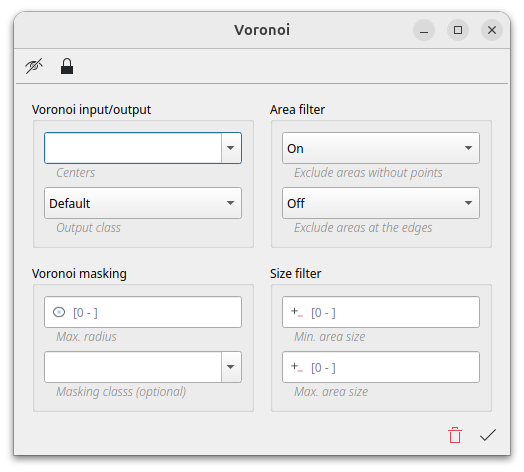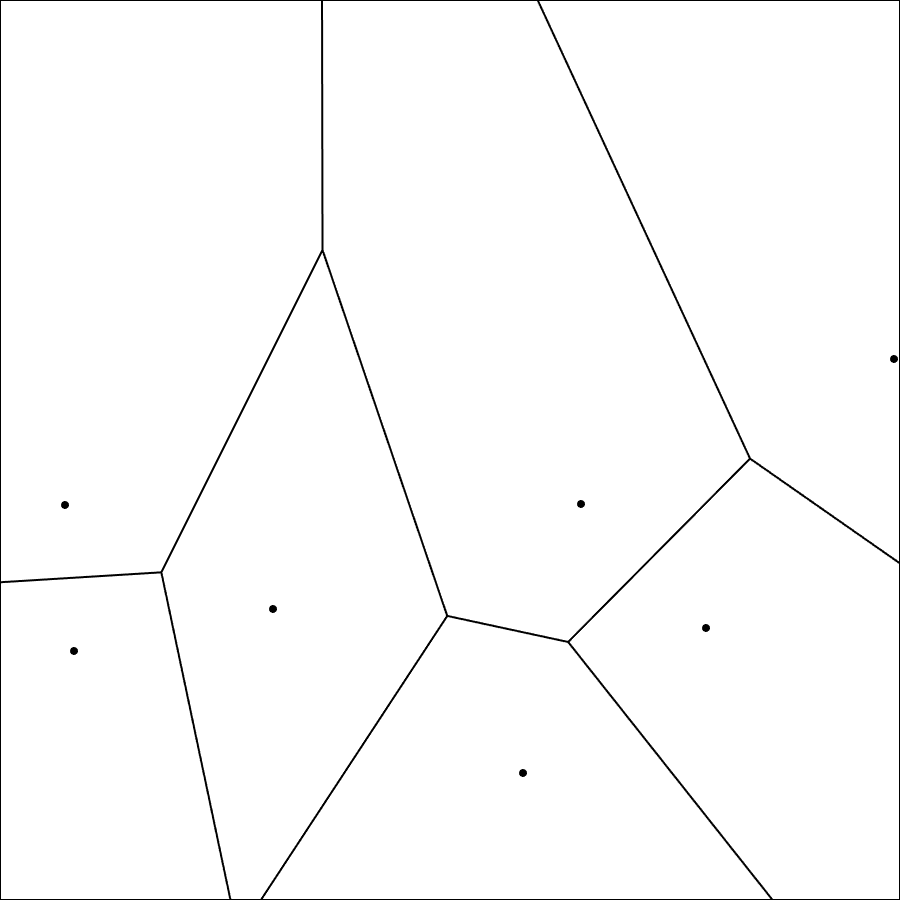In order to construct a Voronoi diagram, it is necessary to gather certain fundamental data.
This information can be obtained from the Voronoi settings tab, which is used for the Voronoi diagram construction process.
A Voronoi diagram, also known as a Thiessen polygon or Dirichlet decomposition, represents a decomposition of space into regions that are determined by a given set of points in space, referred to here as centres. The diagram areas are generated so that the enveloping area of each point is the closest to that point. Voronoi diagrams can be useful for approximating cell surfaces based on known cell nuclei.
Voronoi centers
A Voronoi diagram is constructed using points in space as the fundamental building blocks.
The Voronoi centers defines the object classes which ImageC should use the take the points in space from.
The centre of mass is used as the initial point for the Voronoi construction process, from the valid regions of interest identified within the selected channel.
Bestpractice Typical
Voronoi centersare nuclei.
Max radius
With setting Max. radius the area of a Voronoi diagram can be limited by its radius.
This option is particularly beneficial in scenarios where cells must be approximated based on provided nuclei, yet the cell density is exceedingly low.
Remove the value if no are size limitation should be done.
Masking class
ImageC offers the option to overlay and intersect a calculated Voronoi diagram with another surface. This option is particularly beneficial in scenarios where a cell area channel exists. The intersection of the calculated Voronoi grid with the cell area channel results in a more accurate cell approximation, as any areas that are not part of the actual terrain are removed.
Object filter
Object filter in voronoi slots are applied to the calculated Voronoi diagram areas.
Beside the option to exclude voronoi diagram areas based on its size two more advanced options, Exclude areas at the edges and Exclude areas without center are available.
Exclude areas at the edges
When this filter is active, all areas that touch the edge of the image are marked as invalid.
Exclude areas without center
The Voronoi diagram is computed based on a set of points which are the centres of the computed Voronoi diagram areas.
When using the Voronoi diagram in combination with a Masking class, it can happen that after applying the mask, areas are left that don't have a centre point anymore.
Enabling this filter will invalidate all areas that do not contain a point from the source point set.
Bestpractice It is recommended to enable this option if nuclei are used as a set of points and cell areas as a clipping mask. Applying this filter option will filter out all left areas that do not contain nuclei.


